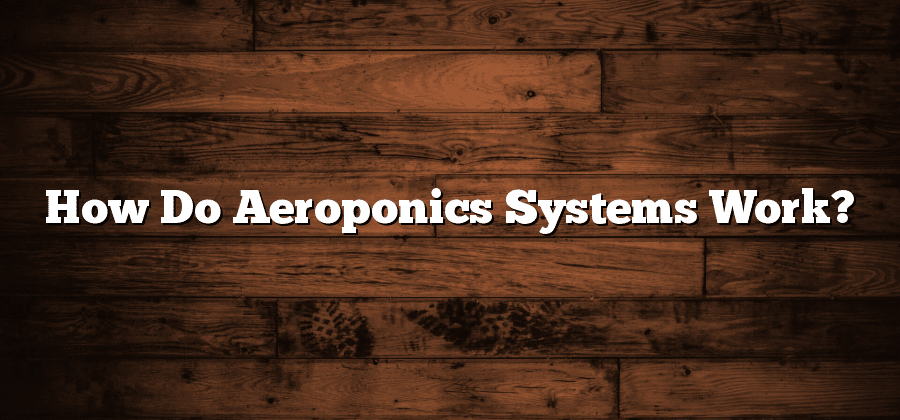Definition and Principles of Aeroponics Systems
Aeroponics systems are innovative and advanced systems used for cultivating plants in a highly efficient manner. Unlike traditional soil-based cultivation techniques, aeroponics involves the suspension of plant roots in the air, allowing them to receive vital nutrients and oxygen. This method relies on a nutrient-rich mist or spray to deliver the necessary elements directly to the roots, promoting optimal growth and development.
The principles of aeroponics systems revolve around the precise control and optimization of essential factors that influence plant growth. These factors include the nutrient solution, air and oxygen supply, and the application of mist or spray. By providing plants with a highly oxygenated and nutrient-rich environment, aeroponics systems allow for faster growth rates, increased nutrient absorption, and improved overall plant health. Through the mastery of these principles, aeroponics systems offer a promising solution to the challenges faced by traditional agricultural practices.
The Role of Nutrient Solution in Aeroponics
The nutrient solution plays a crucial role in the functioning of an aeroponics system. Acting as a substitute for soil, it provides the essential elements and minerals necessary for the healthy growth of plants. The nutrient solution consists of a balanced blend of macro and micronutrients, dissolved in water, which is then delivered directly to the plant’s roots through the misting or spraying mechanism of the aeroponics system. This allows the plants to uptake the nutrients more efficiently, as they are delivered in a highly available form.
The composition of the nutrient solution is meticulously designed to meet the specific nutritional requirements of the cultivated plants. It typically includes essential elements such as nitrogen, phosphorus, potassium, calcium, magnesium, and sulfur, along with trace elements like iron, manganese, copper, and zinc. These nutrients are essential for the plants’ metabolic processes, including photosynthesis, respiration, and growth. By providing these elements in a highly bioavailable form, aeroponics systems ensure that the plants receive the optimal nutrition they need for healthy development. Additionally, the nutrient solution in aeroponics systems can be adjusted and customized according to the specific needs of different plant varieties, making it a flexible and adaptable method of cultivation.
Components of an Aeroponics System
There are several essential components that make up an aeroponics system. The first component is the reservoir, which holds the nutrient solution used to nourish the plants. The reservoir should be made of a non-reactive material to prevent any contamination of the solution. It should also be equipped with a reliable pump to ensure a constant flow of the nutrient solution to the plants.
Another important component of an aeroponics system is the spray nozzles. These nozzles are responsible for delivering a fine mist of the nutrient solution directly to the plant roots. They are typically positioned below the plants, ensuring that the roots receive an even distribution of the solution. It is crucial for the spray nozzles to be of high quality, as any clogging or malfunctioning can disrupt the effectiveness of the system.
In addition to these components, an aeroponics system also requires a timer system. This timer controls the frequency and duration of the nutrient solution misting cycles. By setting the timer, growers can ensure that the plants receive the optimal amount of moisture and nutrients without wasting resources.
Overall, a properly designed and functioning aeroponics system consists of a reservoir, reliable pump, spray nozzles, and a timer system. Each component plays a crucial role in providing the necessary conditions for plants to thrive in an aeroponic environment.
Understanding the Importance of Air and Oxygen in Aeroponics
Proper aeration is crucial in aeroponic systems as it plays a vital role in plant growth and development. Adequate oxygen levels are necessary for the root system to function optimally, ensuring the supply of nutrients and water to the plants. In an aeroponic setup, the roots are suspended in the air, allowing for greater oxygen exchange compared to traditional soil-based systems. This increased oxygen availability promotes healthier root development, leading to faster plant growth and higher yields.
One of the primary benefits of a well-aerated aeroponic system is the prevention of root diseases caused by anaerobic bacteria and fungi. These harmful pathogens thrive in environments with low oxygen levels and can quickly infect and damage plant roots. By maintaining high oxygen levels in the nutrient-rich mist, aeroponics eliminates the potential for stagnant water and restricts the growth of harmful microorganisms. This helps to ensure the plants’ health and reduces the need for chemical treatments, making aeroponics a more sustainable and environmentally-friendly growing method.
The Function of Mist and Sprays in Aeroponics Systems
Mist and sprays play a crucial role in aeroponics systems, providing the vital connection between the plants and the nutrient solution. In aeroponics, the roots of the plants are suspended in the air, allowing them to receive nutrients and moisture through misting and spraying.
One function of mist and sprays is to deliver the nutrient solution directly to the roots, ensuring that plants receive the necessary elements for growth and development. The fine mist or spray allows for optimal nutrient absorption, as it covers a larger surface area of the roots. Additionally, misting and spraying also facilitate the oxygenation of the roots, as the small droplets break the surface tension and allow air to reach the roots. This oxygenation is vital for the health of the plant and its ability to absorb nutrients effectively.






